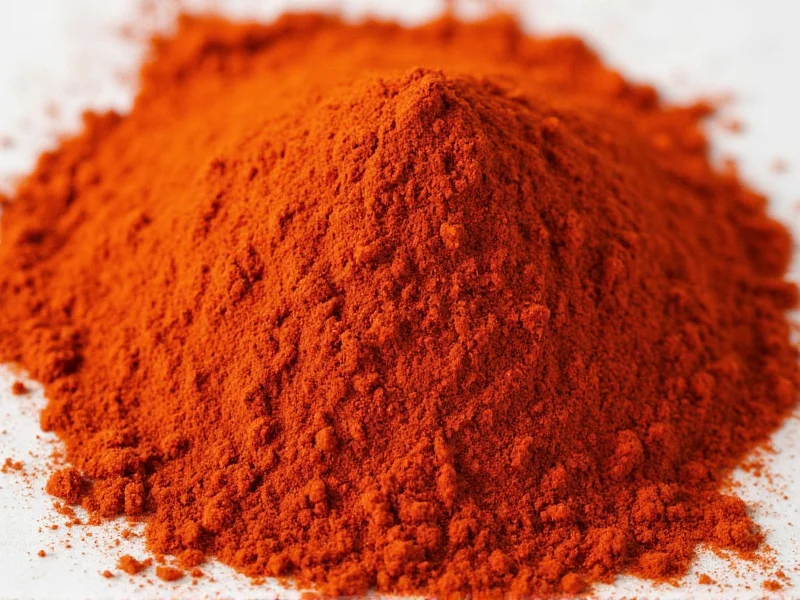Understanding the difference between chili powder and cayenne pepper is essential for home cooks and culinary enthusiasts who want to achieve authentic flavors in their dishes. Despite their similar appearances and overlapping uses in various cuisines, these two pantry staples have distinct characteristics that affect flavor, heat, and application in recipes.
Composition and Ingredients
The fundamental difference lies in their composition. Cayenne pepper consists of nothing but ground dried cayenne peppers, making it a single-ingredient spice. This pure form delivers consistent, intense heat measuring between 30,000-50,000 Scoville Heat Units (SHU).
Chili powder, however, varies significantly by brand and region. In the United States, commercial chili powder is typically a seasoning blend containing:
| Typical Chili Powder Composition | Percentage |
|---|---|
| Ground Ancho/Pasilla Peppers | 60-70% |
| Cumin | 15-20% |
| Garlic Powder | 5-10% |
| Oregano | 3-5% |
| Other Spices (coriander, paprika) | 2-5% |
Heat Level Comparison
When examining the difference between chili powder and cayenne pepper, heat intensity is the most dramatic distinction:
- Cayenne pepper: 30,000-50,000 SHU - delivers immediate, sharp heat that builds
- Standard chili powder: 1,000-3,000 SHU - provides mild warmth with complex flavor notes
- "Hot" chili powder blends: May reach 5,000-8,000 SHU but still significantly milder than cayenne
This substantial heat difference explains why substituting one for the other without adjustment can dramatically alter a dish's outcome. Many cooking disasters occur when home chefs mistakenly use cayenne pepper when a recipe calls for chili powder.
Culinary Applications
Understanding when to use each spice helps achieve authentic flavors in various cuisines:
Best Uses for Cayenne Pepper
- Adding controlled heat to sauces, soups, and stews
- Creating spicy rubs for meats
- Enhancing flavor in Cajun and Creole dishes
- Adding kick to deviled eggs or potato salad
- Finishing touch on roasted vegetables
Best Uses for Chili Powder
- Authentic Tex-Mex dishes like chili con carne
- Taco seasoning and fajita mixes
- Southwestern-style rubs for meats
- Enchilada sauces and salsas
- Adding depth to bean dishes and rice preparations
Substitution Guidelines
When you need to substitute one for the other, precise measurements are crucial for maintaining recipe balance. The difference between chili powder and cayenne pepper in substitution requires careful conversion:
- Chili powder instead of cayenne: Use 3 teaspoons chili powder for every 1/4 teaspoon cayenne
- Cayenne instead of chili powder: Use 1/8 teaspoon cayenne plus 1 teaspoon paprika for every 1 tablespoon chili powder
These ratios account for both the heat difference and flavor profile variations. When substituting cayenne for chili powder, adding paprika helps replicate the earthy, slightly sweet notes that chili powder provides beyond just heat.
Regional Variations to Consider
One source of confusion about whether chili powder is same as cayenne pepper comes from regional terminology differences:
- United States: "Chili powder" almost always refers to the spice blend described above
- United Kingdom and India: "Chilli powder" often refers to pure ground dried chilies, which may be similar to cayenne but can vary by pepper type
- Mexico: "Chile en polvo" typically means pure ground dried chilies without additional spices
This regional variation explains why some international recipes might use the terms interchangeably, creating confusion for cooks unfamiliar with these distinctions.
Practical Buying and Storage Tips
To ensure you're getting the right product and maintaining optimal flavor:
- Check ingredient labels carefully - pure cayenne should list only "cayenne pepper"
- For authentic Mexican cooking, seek "chile powder" made from specific dried chilies like ancho or guajillo
- Store both spices in airtight containers away from light and heat
- Replace ground spices every 6-12 months for optimal flavor (they don't spoil but lose potency)
- Consider buying whole dried peppers and grinding them yourself for fresher flavor
Common Misconceptions Clarified
Several myths persist about the relationship between chili powder and cayenne pepper:
- Myth: All red pepper powders are the same
- Fact: Color alone doesn't indicate type - many chili varieties produce red powder
- Myth: Cayenne is just hot chili powder
- Fact: They have fundamentally different compositions and flavor profiles
- Myth: You can always substitute one for the other in equal amounts
- Fact: Equal substitution would make dishes either too mild or overwhelmingly hot
Frequently Asked Questions
Can I use chili powder instead of cayenne pepper in a recipe?
Yes, but with significant adjustment. Use 3 teaspoons of chili powder for every 1/4 teaspoon of cayenne pepper required. This accounts for both the heat difference and flavor profile variations between chili powder and cayenne pepper.
Which is hotter: cayenne pepper or chili powder?
Cayenne pepper is significantly hotter than standard chili powder. Cayenne measures 30,000-50,000 Scoville Heat Units, while typical chili powder ranges from 1,000-3,000 SHU. This makes cayenne approximately 10-50 times hotter than regular chili powder.
Why do some recipes use both chili powder and cayenne?
Recipes often include both to achieve layered heat and flavor. Chili powder provides the foundational chili flavor with mild warmth, while cayenne adds controlled, sharp heat without overwhelming the other spice notes. This combination creates more complex and authentic-tasting dishes.
Is cayenne pepper the same as red pepper flakes?
No, they are different products. Cayenne pepper is a fine powder made exclusively from ground cayenne peppers. Red pepper flakes are coarsely crushed dried chili peppers (often a mix of varieties) that include seeds and membrane, providing a different texture and heat distribution in dishes.











 浙公网安备
33010002000092号
浙公网安备
33010002000092号 浙B2-20120091-4
浙B2-20120091-4